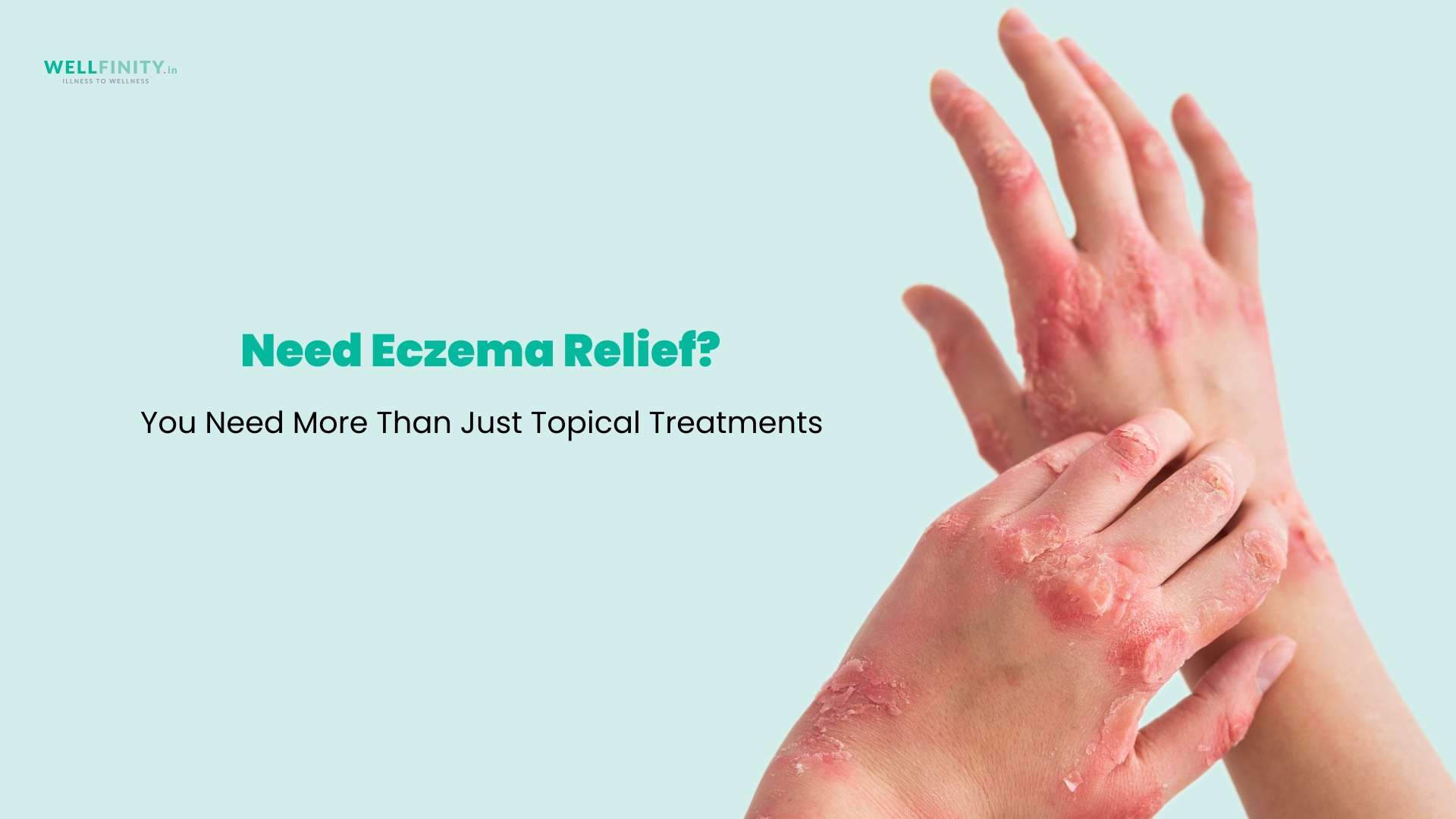A few months ago, I was on a visit to my sister’s place. During dinner one night, my teenaged nephew Aarav, rolled up his sleeves and I couldn’t help but notice dark, velvety patches on his skin. When I queried about it, my sister told me that he also had it more prominently around his neck and underarms. She thought it was just a skin blemish, but admitted that it had made Aarav conscious in social settings. He had been wearing full sleeve clothes only, and ensured the ‘blemishes’ were not visible.
Being a functional medicine practitioner myself, I recognised the ‘blemishes’ as Acanthosis Nigricans. I could not fathom that educated people in my own family could be so ignorant and casual about a skin disorder. Of course, it is a very common problem, but it could also be the sign of a more serious underlying condition. And if left unattended, it could lead to more serious complications. My sister had ignored it for over 6 months. As a result, Aarav was diagnosed with pre-diabetes at a tender age.
This unfortunate happenstance has prompted me to take the onus upon myself to write this blog and educated people about Acanthosis Nigricans, its implications and treatment, so that more people like Aarav don’t ignorantly fall into the trap of this condition.
What is Acanthosis Nigricans?
To begin with, we must first understand what Acanthosis nigricans is.
Acanthosis nigricans is a skin condition typified by areas of dark, velvety discoloration in body folds and creases. The affected skin can become thickened and may have an odour or itch. It most often appears in the armpits, groin, and neck, elbows, knees, knuckles, thighs, abdomen and even occur over the face.
Reverse Your Diabetes and Chronic Diseases!
Get Started on Your Reversal Journey Today!
This condition can affect individuals of any age, including children, but is more common in adults over 30 years of age. It is often associated with certain health conditions, such as obesity, diabetes, fatty liver, insulin resistance, metabolic and hormonal disorders.
Acanthosis Nigricans in children is becoming increasing prevalent as nearly 1/3rd of them are suffering from insulin resistance. The reason for this is the rise in obesity among kids due to ultra-processed, sedentary lifestyles and not going outdoors.
Is Acanthosis Nigricans just a cosmetic problem or a more serious issue?
Like my sister, most people have a very casual approach towards Acanthosis Nigricans. They basically see it as a skin issue and don’t suspect anything deeper. Some even view it as a sun-burn or accumulation of dirt and skin colour change.
So they approach a dermatologist to consult on how to remove blackness from neck and other areas. The dermatologist usually treats the affected area with topical drugs or laser therapy. Tea tree oil and creams containing lactic acid and retinol are often used to peel-off the affected the skin.
These symptomatic and superficial treatments show quick results, but the reversal is short-lived and the condition recurs. This is because although Acanthosis Nigricans manifests in the skin, the underlying problem is unbalanced metabolism, which wasn’t treated at all.
The occurrence of Acanthosis Nigricans is also a marker for insulin resistance. Insulin helps to absorb glucose into the cells. When the cells become insulin resistant, they are unable to absorb glucose. As a result, the glucose remains in the bloodstream. This prompts the pancreas to produce more insulin.
The extra insulin in the bloodstream causes the skin cells – particularly those in the folds and creases of the skin – to grow more than normal. When these skin cells grow, they create thick, dark, velvety patches seen in the case of Acanthosis Nigricans.
Apart from Acanthosis Nigricans, there can be other markers of insulin resistance as well. These are skin tags, acne, rosacea, and male pattern baldness in females.
Long-term use of steroids for the treatment of allergies, asthma, inflammatory bowel disease, transplant recipients etc. can also cause insulin resistance.
What is the clinical implication of Acanthosis Nigricans?
Acanthosis Nigricans and other skin markers should be seen as red flag signs of deranged metabolic health. Steps should be taken immediately to negate the risk of developing diabetes, hypertension, heart disease, PCOS, Infertility and even dementia.
In rare cases, malignant Acanthosis Nigricans has also been associated with development of tumours that may lead to Acanthosis Nigricans cancer.
Acanthosis nigricans is a treatable condition.
Acanthosis Nigricans Treatment
Acanthosis Nigricans self-care or management involves general measures such as forced weight reduction through ill-designed Acanthosis Nigricans weight loss programs. Or mostly through the use of topical or oral drugs, chemical peels, or lasers.
However, Acanthosis Nigricans treatment in these ways come with some caveats which have been elaborated below:
- Nigrifix cream: This is arguably the best cream for Acanthosis Nigricans. However, it may cause skin irritation, redness, itching, or a burning sensation. Nigrifix cream can heighten sun sensitivity and lead to sunburns. Therefore, sun protection should be prioritized and one should discontinue it if irritation occurs. If you are allergic or on any medication, you should consult a doctor before using it. Pregnant or breastfeeding mothers and children under 12 years of age should avoid using it.
- Laser therapy: Acanthosis Nigricans laser treatment involves intense pulsed light therapy (IPL) to minimize the discoloration of patches that have occurred due to Acanthosis Nigricans.
- Cryotherapy: This method reduces the prominence of the dark patches by freezing the targeted skin cells.
- Chemical peels: This process involves the controlled burning of the affected area with the use of acidic solutions. It effectively results in shedding the discoloured skin.
- Microdermabrasion: In this technique, a device is used to exfoliate the top layer of the dead skin cells, thus reducing the discoloration and promoting a more even skin tone.
It is to be noted here that the problem with all of the above is that they treat Acanthosis Nigricans superficially, without dabbling into the underlying root cause. Hence, while they may provide quick relief, the problem is likely to recur. Moreover, these treatments are known to have common side effects like drying, irritation, and redness or skin irritation, poor gut microbiome gastrointestinal disturbances, reduced immunity, and headaches.
Functional medicine approach to Acanthosis Nigricans
When treating the root cause of Acanthosis Nigricans, the focus is generally of obesity. Reduction of at least 10% of total body weight is usually advocated. However, the treatment should ideally be more holistic. Our Acanthosis Nigricans specialists at Wellfinity focus on addressing insulin resistance, as it is the root cause and can even affect people who are not overweight.
Certain changes in diet can help in reducing insulin resistance. One should completely avoid ultra-processed food, sugary soft drinks, and limit the consumption of alcohol. Eat minimally processed food that are rich in fibers and micronutrients, and low in sugars. Consume processed carbs, and prioritize proteins and healthy fats. Fast at least once or twice a week or skip a meal of two.
Apart from diet, certain lifestyle changes will also be necessary. Exercise regularly with more focus on strength training. Ensure proper sleep, exposure to sunlight, good quality air and drink structured water. Avoid blue light toxicity.
Most chronic disorders start in the gut. Therefore, it is also important to correct gut dysbiosis, infections and inflammations.
In 90% of the cases, Acanthosis Nigricans is cured a few months after the reversal of insulin resistance. Only in the stubborn and are cases, topical creams are required.
Conclusion:
If Acanthosis Nigricans is approached in a holistic manner – by addressing the root cause and understanding how it affects the patient, it can be cured permanently and sustainably. Moreover, treating the underlying condition can also save you from an impending metabolic disaster in the future.
Wellfinity has a team of specialized healthcare professionals including counsellors who can help you in understanding Acanthosis Nigricans, and functional medicine nutritionists who can assist in designing a personalized diet plan to help you in Acanthosis Nigricans self-care and cure. And the icing on the cake is that we are just a call or message away!!




2 thoughts on “Acanthosis Nigricans: A Skin Issue or a Sign of Insulin Resistance?”
Do you see patients for chronic gut issues like ibs – c and possible acanthosis n?
hi Nicole – yes we do